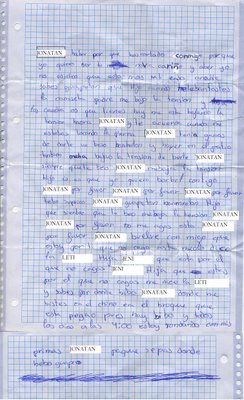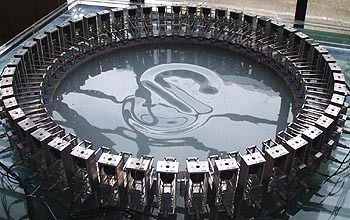Beaming people in Star Trek fashion is still in the realms of science fiction but physicists in Denmark have teleported information from light to matter bringing quantum communication and computing closer to reality.
Until now scientists have teleported similar objects such as light or single atoms over short distances from one spot to another in a split second.
But Professor Eugene Polzik and his team at the Niels Bohr Institute at Copenhagen University in Denmark have made a breakthrough by using both light and matter.
"It is one step further because for the first time it involves teleportation between light and matter, two different objects. One is the carrier of information and the other one is the storage medium," Polzik explained in an interview on Wednesday.
The experiment involved for the first time a macroscopic atomic object containing thousands of billions of atoms. They also teleported the information a distance of half a meter but believe it can be extended further.
"Teleportation between two single atoms had been done two years ago by two teams but this was done at a distance of a fraction of a millimeter," Polzik, of the Danish National Research Foundation Center for Quantum Optics, explained.
"Our method allows teleportation to be taken over longer distances because it involves light as the carrier of entanglement," he added.
Quantum entanglement involves entwining two or more particles without physical contact.
Although teleportation is associated with the science-fiction series Star Trek, no one is likely to be beamed anywhere soon.
But the achievement of Polzik's team, in collaboration with the theorist Ignacio Cirac of the Max Planck Institute for Quantum Optics in Garching, Germany, marks an advancement in the field of quantum information and computers, which could transmit and process information in a way that was impossible before.
"It is really about teleporting information from one site to another site. Quantum information is different from classical information in the sense that it cannot be measured. It has much higher information capacity and it cannot be eavesdropped on. The transmission of quantum information can be made unconditionally secure," said Polzik whose research is reported in the journal Nature.
Quantum computing requires manipulation of information contained in the quantum states, which include physical properties such as energy, motion and magnetic field, of the atoms.
"Creating entanglement is a very important step but there are two more steps at least to perform teleportation. We have succeeded in making all three steps -- that is entanglement, quantum measurement and quantum feedback," he added.



